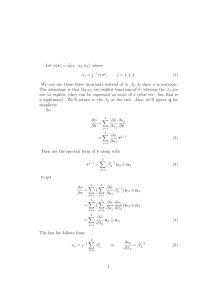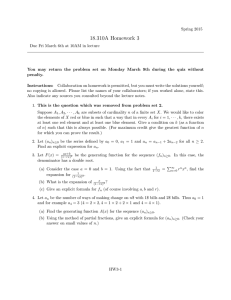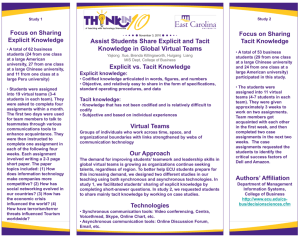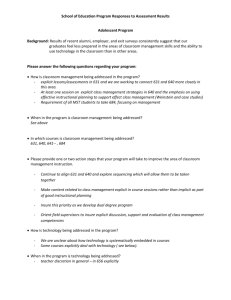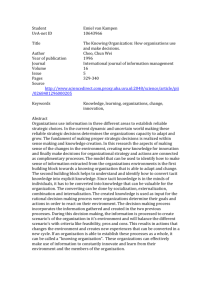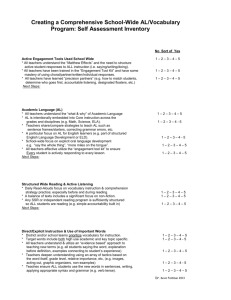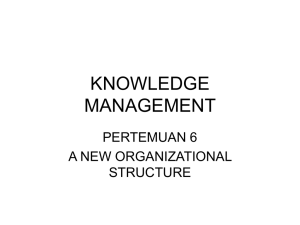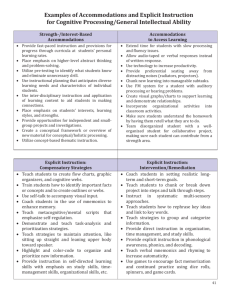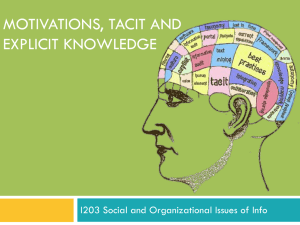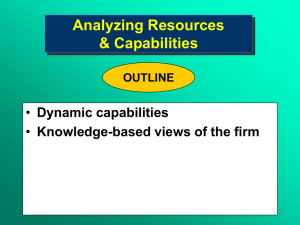Teams and Knowledge management
advertisement
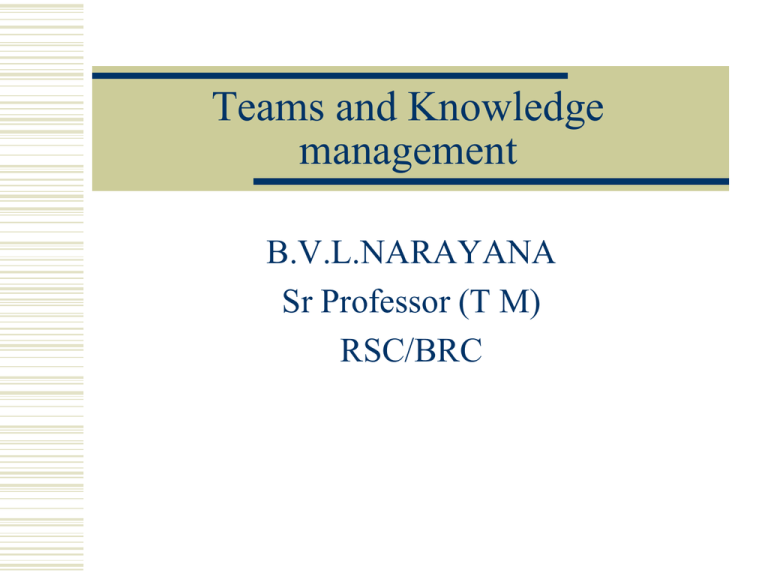
Teams and Knowledge management B.V.L.NARAYANA Sr Professor (T M) RSC/BRC Organizational learning( Kim 1993) All organizations learn through their individuals Organizations cannot learn independent of all individuals Crucial issue –transfer of individual learning to organizational learning Individual learning Operational Know how Accommodation ( adjusting mental models to experiences) Routines Conceptual Know why Assimilation (integrating experiences into mental models) Frame works Mental models are deeply held images of how the world works and powerfully influence what we see (Senge 1990) Organizational learning Cycles of individual learning affect organizational learning through their impact on shared mental models since not all individual learning's has organizational consequences A group is a collection of individuals with shared mental models contributing to organizations shared mental models OADI-SMM THEORY Observe-assess-design-implement-shared mental models Learning occurs through exchange of individual and shared mental models Individuals learn and change mental models Organizations learn when individuals learn Not all individual learning has organizational consequences Transfer mechanisms Active organizational memory- what it attends, what it chooses to act and what it chooses to remember—in form of individual and shared mental models Individuals learning and making new mental models and making them explicit helps organizational learning as it is dynamic Transfer mechanisms Shared mental models make organizational memory usable—because of tacit knowledge which makes explicit knowledge complete Each mental model is a clustering of data that prescribes a course of action Conceptual learning changes these models New mental models enclose changes and how they fit into existing frame works Transfer mechanisms Individual mental models get embedded in organizational milieu or reflection of culture Influence of organizational culture leads to formation of shared mental models Strength of such linkages depends upon amount of influence exerted IDLL –when individual learning affects individual mental models and future learning ODLL- when individual mental models get incorporated into organization through shared mental models and affect organizational actions Transfer mechanisms— incomplete learning cycles Situational learning—crisis management Improvisation on the spot but no coding No change in mental models Fragmented learning Individual learns but organization does not learn Link between individual mental model and shared models not established Opportunistic learning When organizational actions are based on individual mental models and not shared mental models Challenges Making mental models explicit Mental models are dynamic and non linear Have both explicit and tacit components Manage the transfer of individual mental models to shared mental models Questions? Centrality of teams in organizational learning (Murray and Moses 2005 teams act as critical liaison device between learning at the individual and organizational level. Teams help to develop horizontally based personal relationships assist in knowledge creation by making personally implicit knowledge more explicit team effectiveness is influenced by the dynamics of team learning and team structure Team learning Team learning involves transforming conversational and collective thinking skills so that groups of people can reliably develop intelligence and ability greater than the sum of individual member talents (Senge 1994) team learning is more important than individual learning since most decisions are made in subunits such as teams and divisions. Collective interpreting and sense making within a group or team facilitates shared understandings which leads to better Team learning teams are often presented with the contrasting goals of achieving long-term renewal and short-term performance. So connect strategy with operations Operational connectedness indicates the crucial interlinked role of teams in bridging learning at the individual and organizational level teams are social units engaged in collective learning through informal processes that link the individual to the organization. Teams are Team knowledge structures Two key dimensions Knowledge differentiation---extent to which team members possess different types of knowledge Increases absorptive capacity and ability to acquire new knowledge Requires knowledge integration to learn Allows creation of new knowledge Team knowledge structures Externalization Is when team uses knowledge held by non team members. Members never personally possess this knowledge Scope for learning is less due to outsourcing Scope for integrating is less Less scope for creation of new knowledge Any questions
